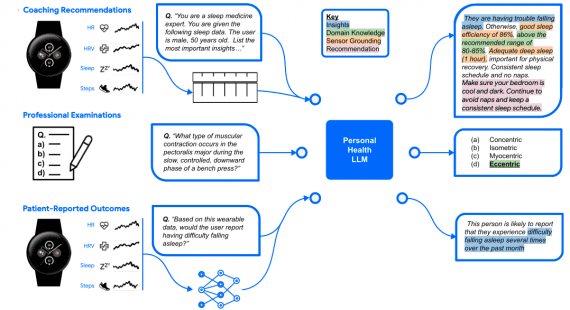
Location advertising has emerged as a vital strategy in digital marketing, enabling advertisers to reach consumers at the right place and time. With the rapid advancement of technology and the increasing reliance on mobile devices, understanding best practices in this domain is essential for maximizing campaign effectiveness in 2024. This article delves into the key strategies and considerations for successful location advertising, emphasizing its integration with connected TV advertising and other digital marketing channels.
Understanding Location Advertising
What is Location Advertising?
Location advertising refers to the practice of delivering targeted ads based on a consumer’s geographic location. By utilizing GPS, Wi-Fi, and other technologies, advertisers can tailor their messages to reach specific audiences in real-time. This method enhances the relevance of advertising campaigns, improving engagement and conversion rates.
Importance of Location Advertising
- Targeted Reach: Location advertising allows businesses to engage customers who are nearby, increasing the chances of foot traffic and conversions.
- Real-Time Engagement: Brands can connect with consumers at critical moments, such as when they are searching for products or services while on the go.
- Enhanced Personalization: By analyzing location data, advertisers can create more personalized marketing messages that resonate with local audiences.
Best Practices for Location Advertising in 2024
1. Leverage Advanced Geotargeting Techniques
Geotargeting is the backbone of location advertising. Here are effective strategies to enhance geotargeting efforts:
- Layering Data Sources: Combine various data sources, such as demographic information, behavioral data, and real-time location signals, to create more comprehensive consumer profiles.
- Dynamic Geofencing: Use dynamic geofencing to adjust targeting parameters based on real-time traffic conditions, weather changes, or events happening nearby.
- Contextual Targeting: Integrate contextual data to send tailored messages based on the user’s current activities or surroundings. For instance, sending a promotion for a nearby coffee shop when someone is in a business district.
2. Optimize for Mobile Devices
Given that a significant portion of location advertising occurs on mobile devices, optimizing for these platforms is crucial:
- Mobile-Friendly Ads: Ensure that your ads are optimized for mobile viewing, including fast-loading times and responsive designs.
- App-Based Advertising: Consider leveraging in-app advertising to reach users while they are engaged with mobile applications, as these ads can provide valuable location data.
3. Integrate Location Advertising with Other Channels
Location advertising should not function in isolation. To maximize its impact, integrate it with other marketing channels:
- Connected TV Advertising: Incorporate location-based ads into CTV campaigns, allowing brands to reach consumers on multiple devices. For example, a consumer watching a cooking show can receive ads for local grocery stores.
- Social Media Platforms: Utilize location targeting on platforms like Facebook, Instagram, and Twitter to reach specific demographics based on their geographic locations.
4. Personalize the User Experience
Personalization is key to successful advertising. Here’s how to enhance user experience through location-based personalization:
- Localized Content: Create ads that reflect the culture and preferences of local audiences. Using local languages, landmarks, and cultural references can make ads more relatable.
- Tailored Offers: Provide exclusive promotions or offers based on users’ locations, such as discounts for first-time visitors or special deals during local events.
5. Monitor and Analyze Campaign Performance
Data analysis is essential for refining advertising strategies:
- Use Analytics Tools: Implement robust analytics tools to track the performance of your location advertising campaigns. Monitor key metrics such as engagement rates, conversion rates, and return on ad spend (ROAS).
- A/B Testing: Conduct A/B tests on different location-based ads to identify which strategies yield the best results. This approach allows advertisers to optimize their campaigns continuously.
Regulatory Considerations
As location advertising becomes more prevalent, it’s essential to stay compliant with legal and ethical guidelines:
- Privacy Regulations: Familiarize yourself with privacy regulations such as the General Data Protection Regulation (GDPR) and the California Consumer Privacy Act (CCPA). Ensure that your data collection practices respect consumer privacy.
- Transparency: Be transparent with users about how their location data is being used. Providing clear information can build trust and improve customer relationships.
Utilizing Technology in Location Advertising
1. Augmented Reality (AR) and Virtual Reality (VR)
The integration of AR and VR in location advertising can create immersive experiences:
- Interactive Ads: Use AR technology to create interactive ads that allow users to visualize products in their local environment. For example, a furniture store could offer an AR feature that enables users to see how a sofa would look in their living room.
- Location-Based Games: Develop location-based games or challenges that encourage users to visit physical stores or participate in local events.
2. Artificial Intelligence (AI) and Machine Learning
AI can enhance location advertising strategies significantly:
- Predictive Analytics: Leverage AI to analyze location data and predict consumer behavior, allowing for more effective targeting and personalized offers.
- Chatbots and Virtual Assistants: Implement chatbots that can provide location-specific information and promotions when users engage with your brand online.
Case Studies of Successful Location Advertising Campaigns
1. Starbucks: Targeting Local Customers
Starbucks effectively uses location advertising to target customers near its stores. By sending mobile coupons to users within a specified radius, the company successfully drives foot traffic to its locations, especially during peak hours.
2. McDonald’s: Seasonal Promotions
During the summer, McDonald’s runs location-based ads that highlight local events and offer promotions tailored to specific regions. This strategy has increased engagement and sales, as consumers feel more connected to the brand.
3. Retail Brands: In-Store Promotions
Several retail brands utilize geofencing to send push notifications to users who enter their stores. These notifications often include exclusive in-store discounts, resulting in increased conversion rates and enhanced customer satisfaction.
Future Trends in Location Advertising
As technology continues to evolve, several trends are expected to shape the future of location advertising:
- Increased Use of 5G: The rollout of 5G technology will enhance the capabilities of location-based services, allowing for faster data transmission and more accurate targeting.
- Integration with IoT Devices: The proliferation of Internet of Things (IoT) devices will enable advertisers to gather more precise location data, leading to more effective and personalized advertising strategies.
- Sustainability and Ethical Marketing: As consumers become more environmentally conscious, brands that practice ethical location advertising and promote sustainability will likely gain a competitive advantage.
Conclusion
In 2024, location advertising will play a pivotal role in digital marketing strategies. By leveraging advanced geotargeting techniques, optimizing for mobile devices, and integrating with various advertising channels, brands can effectively engage consumers in their local markets. Staying compliant with regulations and embracing emerging technologies will further enhance the effectiveness of location advertising campaigns. As the digital landscape continues to evolve, adapting to these best practices will ensure that advertisers remain competitive and relevant in an ever-changing marketplace.


